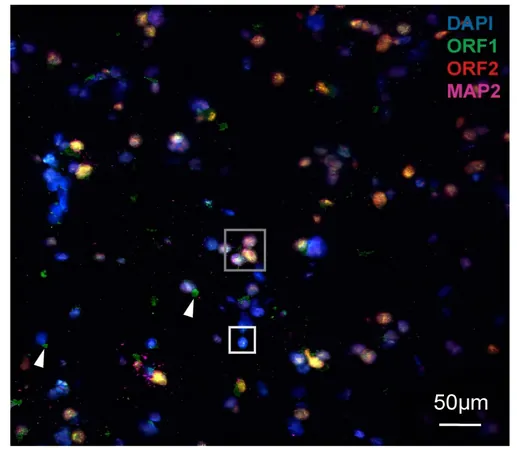
Breakthrough 3D Imaging Reveals Heart Formation Secrets Like Never Before!
2025-05-13
Author: Ming
Revolutionary Discovery in Heart Development
In an astonishing breakthrough, researchers from UCL and the Francis Crick Institute have captured the formation of a heart in 3D for the very first time, revealing the origins of cardiac cells in real-time within a living mouse embryo.
Advanced Technique Pushes Technological Boundaries
Published in *The EMBO Journal*, the study utilized advanced light-sheet microscopy on a specially engineered mouse model. This cutting-edge technique employs a thin sheet of light to create high-resolution images without damaging living tissues, offering unprecedented views of cellular development.
Tracking the Heart's Origin from its Birth
For 40 hours, the team observed individual cells during a crucial developmental stage known as gastrulation—a period when cells begin to specialize and form the body's primary structures, including the heart. This meticulous tracking allowed the researchers to pinpoint the exact origins of heart cells.
What Makes Gastrulation So Important?
Gastrulation, which occurs during the second week of human pregnancy, is the phase when embryonic cells transition into various specialized types with distinct functions. This monumental study provides critical insights that could reshape our understanding of congenital heart defects.
Unexpected Findings in Cell Behavior
Dr. Kenzo Ivanovitch, the senior author, remarked, "For the first time, we observed heart cells closely during mammalian development, and the findings were utterly surprising." The researchers marked heart muscle cells, or cardiomyocytes, with fluorescent colors, enabling them to capture a captivating time-lapse video.
Complex Cellular Choreography Unveiled
Every two minutes, snapshots recorded the dynamic unfolding of cellular activity, revealing a well-orchestrated movement among cells. The early stages showed that multipotent embryonic cells could evolve into various cell types, including the heart and vascular lining cells.
The Master Plan for Heart Cells
Intriguingly, the cells contributing exclusively to the heart emerged swiftly during gastrulation, following specific paths rather than wandering aimlessly. Dr. Ivanovitch noted that this suggests early regulation of cardiac destinies far earlier than previously thought—an eye-opening revelation that reshapes current models of heart development.
Choreography of Cell Movements: The Next Frontier
Lead researcher Shayma Abukar highlighted ongoing efforts to decode the signals guiding this complex choreography during heart formation. She emphasized that the heart arises from distinct cell groups that appear at different times and locations, working together to form this vital organ.
Implications for Medicine and Future Research
The implications of this study are substantial, potentially transforming our understanding and treatment of congenital heart defects, which affect nearly 1 in 100 newborns. Furthermore, these insights could accelerate the advancement of lab-grown heart tissues for regenerative medicine, opening new frontiers for heart health.





 Brasil (PT)
Brasil (PT)
 Canada (EN)
Canada (EN)
 Chile (ES)
Chile (ES)
 Česko (CS)
Česko (CS)
 대한민국 (KO)
대한민국 (KO)
 España (ES)
España (ES)
 France (FR)
France (FR)
 Hong Kong (EN)
Hong Kong (EN)
 Italia (IT)
Italia (IT)
 日本 (JA)
日本 (JA)
 Magyarország (HU)
Magyarország (HU)
 Norge (NO)
Norge (NO)
 Polska (PL)
Polska (PL)
 Schweiz (DE)
Schweiz (DE)
 Singapore (EN)
Singapore (EN)
 Sverige (SV)
Sverige (SV)
 Suomi (FI)
Suomi (FI)
 Türkiye (TR)
Türkiye (TR)
 الإمارات العربية المتحدة (AR)
الإمارات العربية المتحدة (AR)